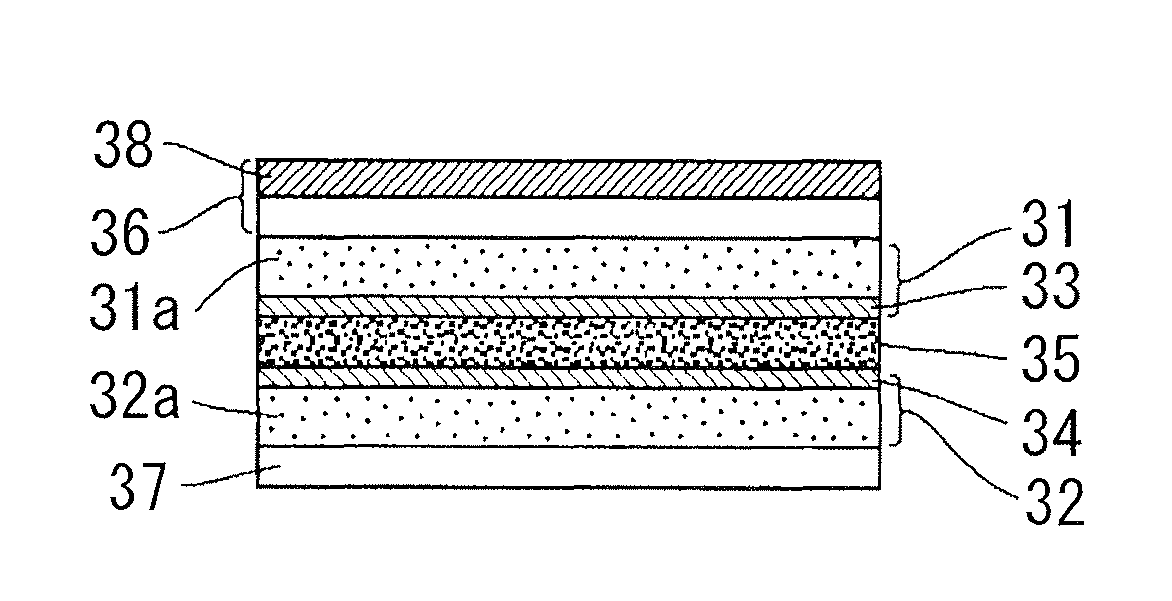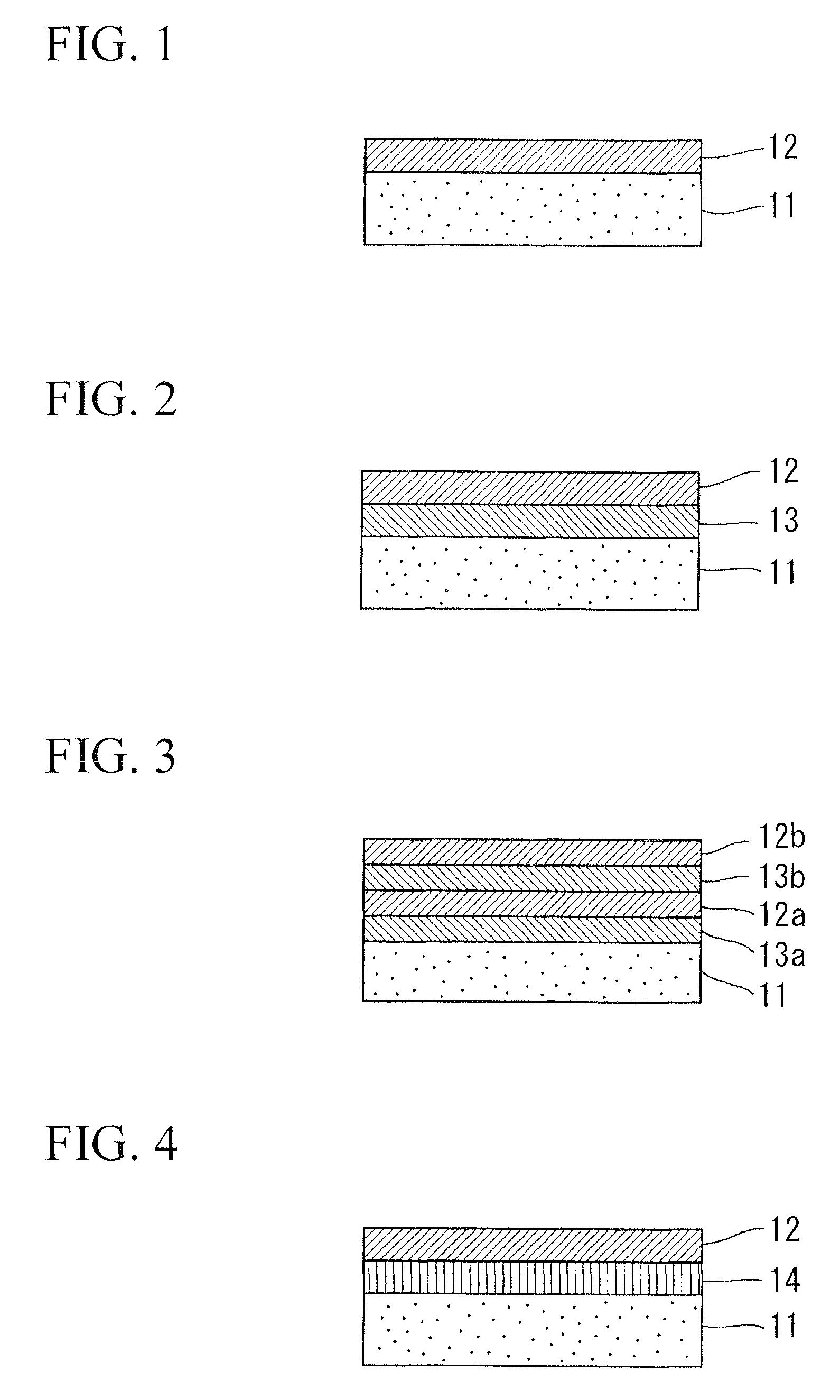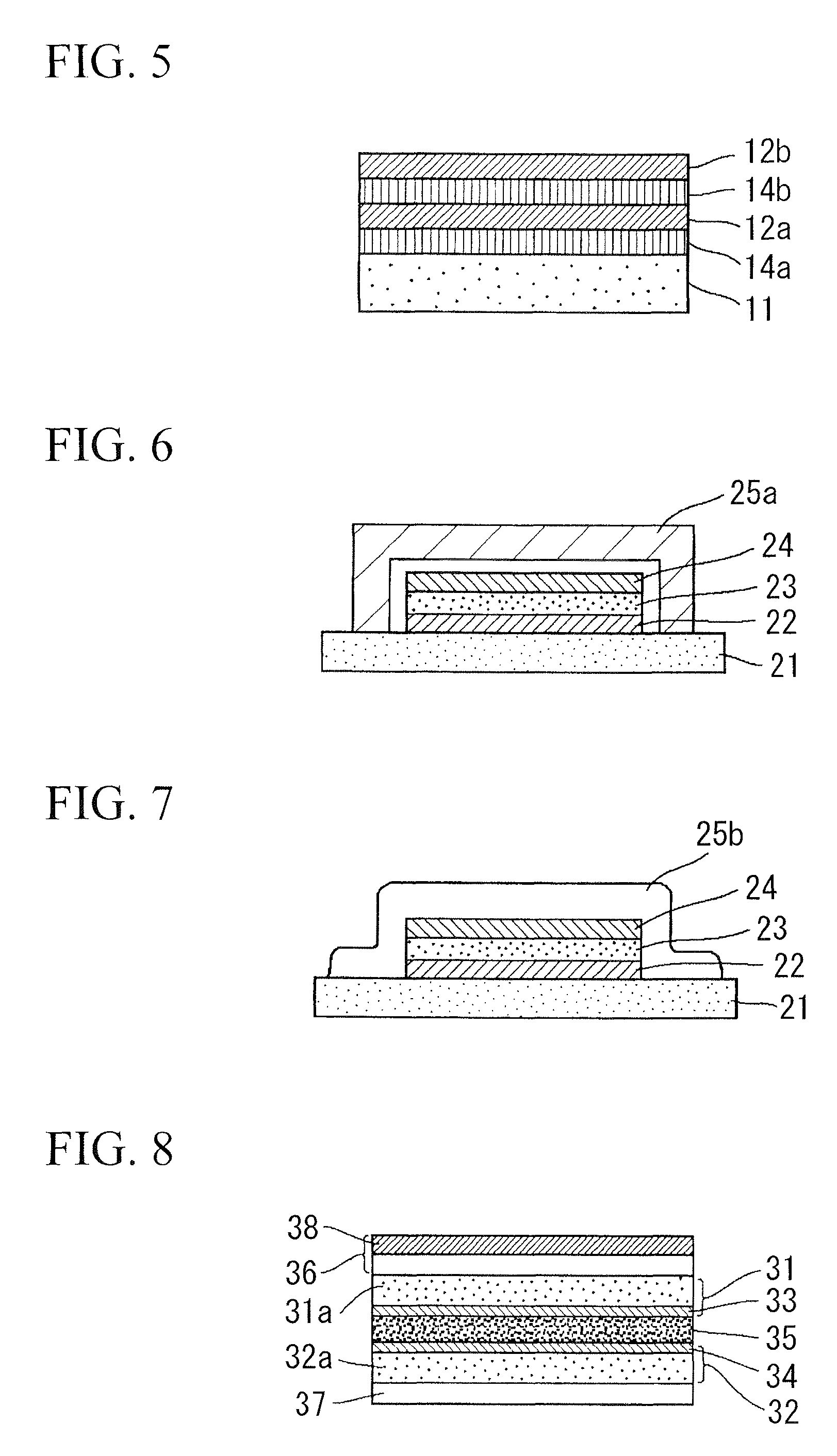Clay thin film substrate, clay thin film substrate with electrode, and display device using the same
a technology of clay thin films and electrodes, applied in the direction of solid-state devices, discharge tubes/lamp details, chemical vapor deposition coatings, etc., can solve the problems of low surface flatness, and low gas barrier performance, so as to improve the gas barrier performance and improve the surface flatness of clay thin films , the effect of suppressing water vapor permeability
- Summary
- Abstract
- Description
- Claims
- Application Information
AI Technical Summary
Benefits of technology
Problems solved by technology
Method used
Image
Examples
example 1
(1) Production of Clay Thin Film
[0075]A clay thin film used as a base was produced by a known method. That is, synthetic smectite was added to distilled water and they were put into a sealed container made of plastic together with a rotor, and the resultant was shaken vigorously to obtain a uniform dispersion. Then, the dispersion was poured into a brass tray, which had a flat bottom face, and the clay dispersion was allowed to stand horizontally to slowly deposit clay particles, and also was dried in a forced draft oven while holding the tray horizontally. A clay thin film having a film thickness of 100 μm was obtained as a result.
(2) Production of Clay Thin Film Substrate
[0076]A gas barrier inorganic layer having silicon oxide as a major component was formed on both sides of the abovementioned clay thin film using a magnetron sputtering apparatus. In other words, the clay thin film was heated to 80° C. in a vacuum chamber and, after removing the residual water content, a gas barri...
example 2
[0079]After producing a clay thin film as in Example 1, a silicon oxide film (a planarized inorganic layer) was formed using a plasma CVD apparatus. In other words, a polymerization reaction was carried out in an oxygen plasma using hexamethyldisiloxane ([(CH3)3Si]2O) as a monomer gas to form a silicon oxide film, which had a film thickness of 200 μm and contained carbon, on both sides of the clay thin film. The average surface roughness Ra was 25 nm before forming the silicon oxide film whereas it was 4 nm after the formation verifying that the surface planarization was achieved. Thereafter, a silicon oxide film (gas barrier inorganic layer), which had a film thickness of 90 nm and contained nitrogen, was formed thereon using the film formation method for gas barrier inorganic layers shown in Example 1 to obtain a clay thin film substrate.
[0080]The water vapor permeability of the clay thin film substrate obtained by the abovementioned method was, under a temperature of 40° C. and a...
example 3
(1) Production of Clay Thin Film
[0085]A clay thin film having a film thickness of 100 μm was obtained as in Example 1.
(2) Production of Clay Thin Film Substrate
(a) Formation of Organic Polymer Layer
[0086]An acrylic, ultraviolet curable resin dissolved in a solvent was coated on the abovementioned clay thin film, and after vaporizing the solvent at 100° C. in a dryer, the resin was cured due to the polymerization using ultraviolet radiation to form an organic polymer layer having a thickness of 2 μm.
(b) Formation of Gas Barrier Inorganic Layer
[0087]A gas barrier inorganic layer having silicon oxide as a major component was formed on the abovementioned clay thin film, where the organic polymer layer was formed, using a magnetron sputtering apparatus. In other words, the clay thin film was heated to 80° C. in a vacuum chamber and, after removing the residual water content, a gas barrier inorganic layer having a film thickness of 90 nm was formed on the abovementioned thin film by the u...
PUM
| Property | Measurement | Unit |
|---|---|---|
| thickness | aaaaa | aaaaa |
| thickness | aaaaa | aaaaa |
| thickness | aaaaa | aaaaa |
Abstract
Description
Claims
Application Information
 Login to View More
Login to View More - R&D
- Intellectual Property
- Life Sciences
- Materials
- Tech Scout
- Unparalleled Data Quality
- Higher Quality Content
- 60% Fewer Hallucinations
Browse by: Latest US Patents, China's latest patents, Technical Efficacy Thesaurus, Application Domain, Technology Topic, Popular Technical Reports.
© 2025 PatSnap. All rights reserved.Legal|Privacy policy|Modern Slavery Act Transparency Statement|Sitemap|About US| Contact US: help@patsnap.com



